Pros: Surprisingly sharp handling; luxurious materials and lighting; better-than-average cargo space; smooth and powerful engine
Cons: Busy ride; annoying touch controls; tight front seating; no plug-in hybrid
The Mercedes-Benz GLC-Class was a wildly impressive compact SUV when it was first introduced, and continued to be a class leader throughout its first generation on the strength of its refined driving experience and lovely interior. The second-generation GLC, introduced last year for the SUV and this year for the Coupe model, largely carries on where its not-terribly-different predecessor left off. Really, the key upgrade is a much larger and more useful cargo area along with the latest Benz infotainment tech.
The trouble with the GLC is simply that competitors have managed to catch up with it, while it’s taken only small steps to move the game forward. The generation has also picked up some bad habits in the form of annoying touch-sensitive controls on the steering wheel and a ride that’s surprisingly busy and, quite frankly, too sporty for the expectations of most shoppers in this segment. Yes, its handling is terrific, but how many would-be GLC 300 buyers intend to routinely attack a mountain road?
Now, if you do, this year’s re-introduced, second-generation GLC AMG models should be just what you’re looking for. We haven’t had a chance to test them yet, but the GLC 63 S E Performance in particular sounds absolutely bonkers with its hybrid-juiced turbo-four putting out 671 horsepower and 752 lb-ft of torque. To say that’ll stand out in the segment is an understatement. And while the volume-selling GLC 300 may not stand out as it once did, with the Genesis GV60 and Volvo XC60 being among our other favorites, it’s still a top performer and worth checking out.
Interior & Technology | Passenger & Cargo Space | Performance & Fuel Economy
What it's like to drive | Pricing & Trim Levels | Crash Ratings & Safety Features
What's new for 2024?
After being completely redesigned last year, the GLC 300 SUV carries over unchanged. The GLC Coupe, however, gets its redesign this year and it not surprisingly gets its SUV sibling’s many changes along with its own signature body style. You can read about it here in our 2024 GLC Coupe first drive review. Both body styles also get a new AMG GLC 43 high-performance variant, while the SUV gets a range-topping GLC 63 S E Performance. The Coupe’s version of that arrives next year.
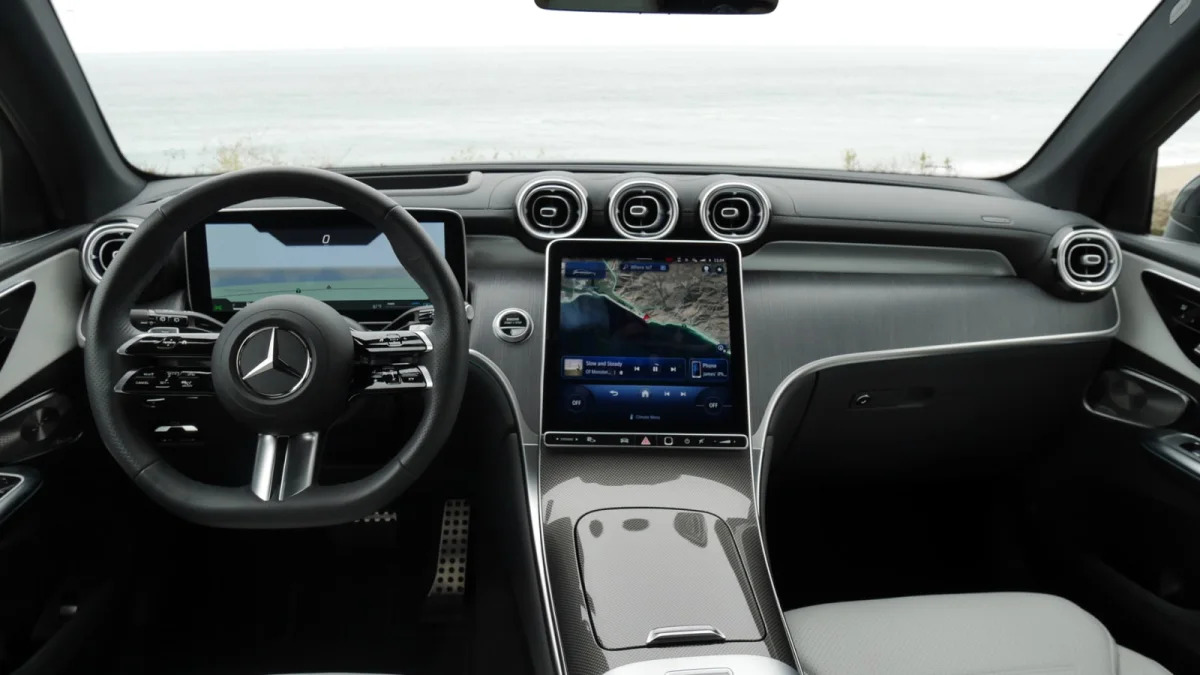
What are the GLC interior and in-car technology like?
Step into the GLC and you'll be immediately impressed by how much it takes from high-end Mercedes models such as the S-Class. The 11.9-inch touchscreen in particular is eye-catching thanks to its crisp, vibrant graphics. It's matched by a 12.3-inch instrument screen with similarly elaborate visuals and a selection of designs. The rest of the dash and interior are covered in high-end materials such as real wood and metal. Customizable 64-color ambient lighting keeps things looking exciting even when it's dark (and trust us, kids love it).
That big screen is quite responsive, at least after it fully boots, which as we discovered in one test vehicle, may take a few moments after hitting the start button. Whether you use the "Zero Layer" mode or the older style with a row of menu icons, most basic functions are fairly easy to access. Menus can get a little deep, though. The instrument screen is highly customizable, too, and the available augmented reality video feed for navigation is trick as it superimposes arrows and other directions onto a live video feed of the road ahead. Just think twice about wearing polarized sunglasses — they significantly reduce the head-up display's legibility.
What's not so trick are the extensive use of touch-sensitive button banks. They're on the doors, steering wheel and along the bottom of the infotainment screen. They're imprecise and cheap feeling. The steering wheel controls are particularly frustrating, since you'll be interacting with them frequently. It's a shame, too, as Mercedes previously had much more premium-looking and richer-feeling traditional switches and buttons for these uses.
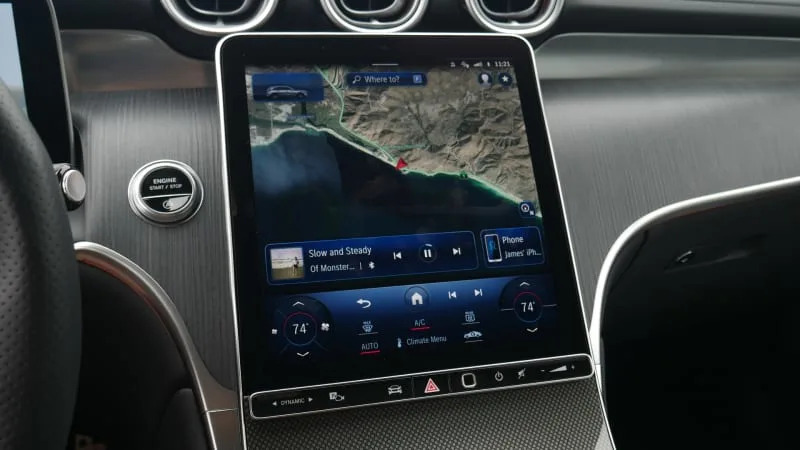
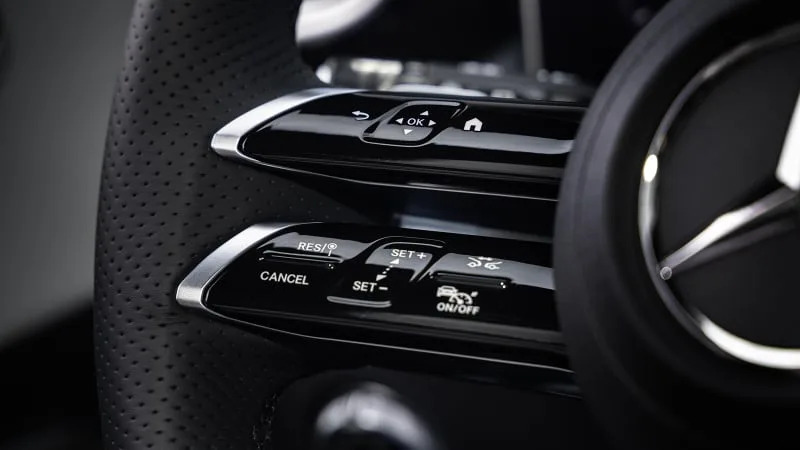
How big is the GLC?
The GLC may look awfully similar to the preview generation, but it actually got larger in an appreciable way. An extra 2.5 inches added to the rear end added a corresponding amount of cargo space. With all the seats down, it has 59.3 cubic feet. With the rear seats raised, the specs say it has 21.9 cubic-feet, which is more than before, but we suspect Mercedes uses a different measurement technique than other manufacturers because the space itself seems larger than that – much like its predecessors' cargo area did. In our luggage test of the current GLC, we found that it could easily hold a whole extra suitcase compared to the last generation. The GLC now has one of the larger cargo areas among compact luxury SUVs and even includes a spare tire, which is a rarity in the segment. As for the Coupe, we have not cargo tested that, but it measures 19.2 cubic-feet. It's hard to know how that difference will play in terms of space for actual stuff, though, considering the very different cargo area shape.
Mercedes also claims improved passenger space, but not enough in the area that counts the most: the front. Knee room is seriously tight with the center stack and transmission tunnel taking up all the available space right of the gas pedal. The power-adjustable wheel has limited movement, which exacerbates things. Head and shoulder room are adequate. The seats are sufficiently supportive and have solid adjustment.
The rear seats are actually much more welcoming than the front seats. They're shaped comfortably enough, if a bit firm. Overall space is only so-so — you'll find more in a Volvo XC60, Acura RDX and just about any non-luxury compact SUV. A lack of seat recline is also disappointing considering its ubiquity on more mainstream compact SUVs. It's not alone in that omission within the luxury segment, but that's not an excuse. Headroom is abundant in the SUV, and although definitely reduced in the Coupe with smaller windows to look out of, it's not as cramped as we feared.
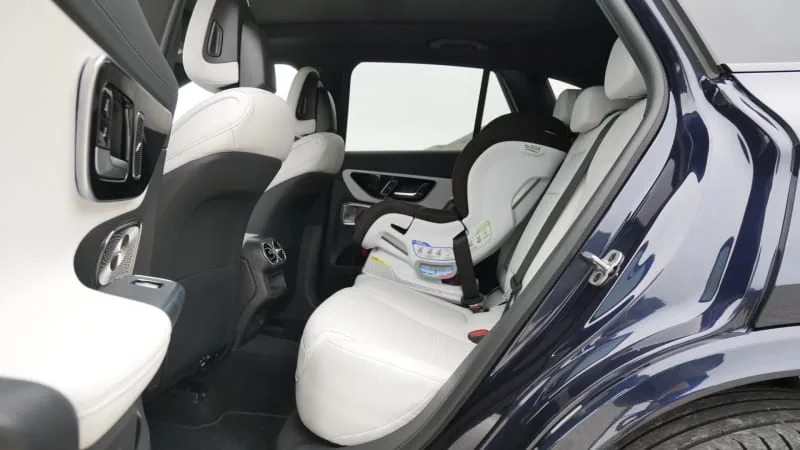
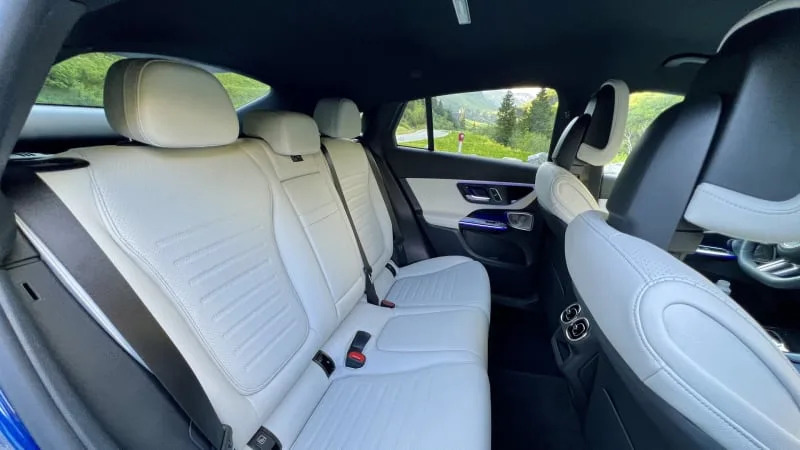
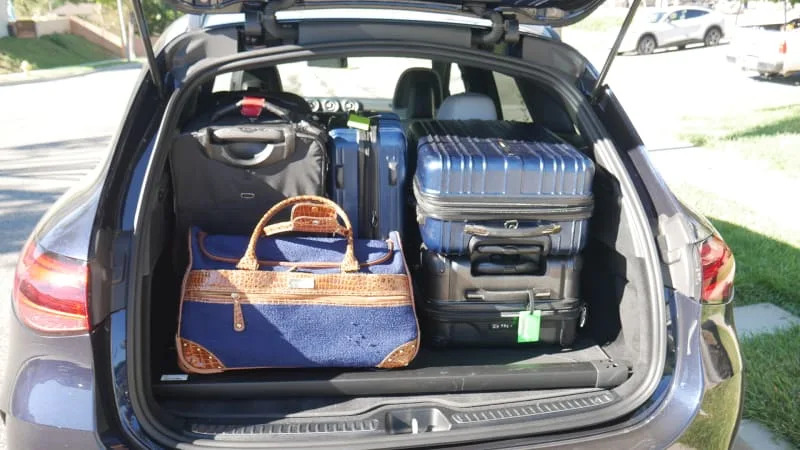
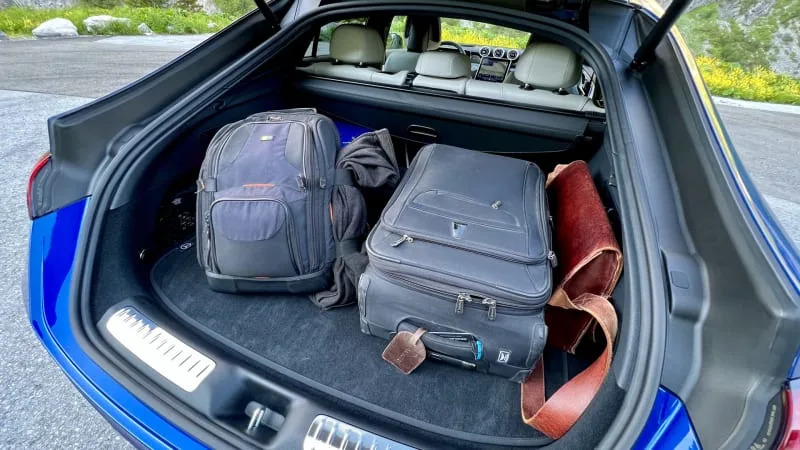
Above pictures: GLC SUV back seat (with child seat), GLC Coupe back seat (no child seat), GLC SUV cargo area (more bags), GLC Coupe cargo area (the last photo not yet described)
What are the GLC fuel economy and performance specs?
The GLC 300 is powered by a turbocharged 2.0-liter four-cylinder with a 48-volt mild hybrid assist motor. It makes 258 horsepower and 295 pound-feet of torque. It's coupled to a nine-speed automatic transmission and either rear- or all-wheel-drive (known as 4Matic). The rear-drive configuration is slightly more efficient between the two with 26 mpg city, 33 highway and 29 combined. The GLC 300 SUV with 4Matic returns 24/32/27. The GLC 300 Coupe with 4Matic is lower at 24/30/26.
The AMG GLC 43 also gets a 2.0-liter turbo-four, but it’s a totally different engine and not a mild-hybrid. It produces 416 hp and 369 lb-ft, which is an enormous output for a four-cylinder. It gets a different, AMG-tuned nine-speed automatic and standard all-wheel-drive, again, special to AMG. Mercedes says it’ll hit 60 mph in 4.7 seconds. EPA-estimated fuel economy was not available at the time of this writing.
The AMG GLC 63 S E Performance gets that same 2.0-liter turbo-four, but adds AMG’s high-performance hybrid system. It produces 671 hp and 752 lb-ft of torque, which is just an absurd amount of power for a compact SUV. It’ll hit in 60 mph in 3.4 seconds. We didn’t have fuel economy data for it either at the time of this writing, but despite being a hybrid, don’t expect great fuel economy.
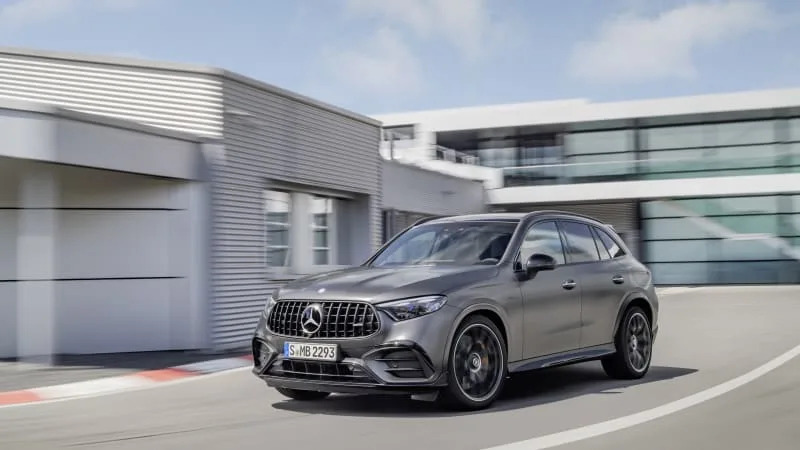
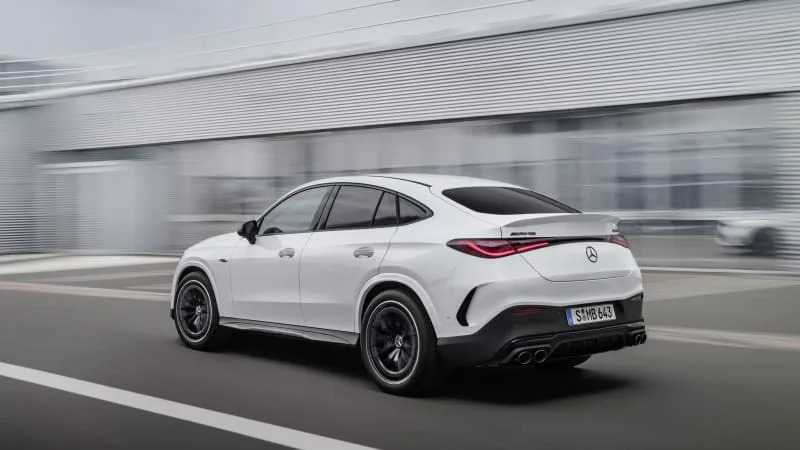
GLC 63 S E Performance SUV and GLC 43 Coupe
What's the GLC like to drive?
We have yet to drive the AMG versions, so stay tuned for info about them. Yet, if you’re looking for a sporty compact SUV, the regular GLC 300 is a shockingly adept and even fun handler. It truly impressed on our mountain road test route, flicking between tight corners with poise and agility. The steering is lighter in effort (though does tighten up a bit in Sport), but feedback is sufficient for the task given this segment of vehicle. If anything, the GLC's handling capability is overkill considering it almost certainly contributes to a constantly busy ride quality. The suspension just doesn't feel like there's enough travel, as opposed to some vehicles that simply could use smaller wheels.
As for the GLC 300’s engine, the 2.0-liter turbo-four is smooth and competitively powerful, with a nice little snarl to it that gets enhanced (artificially) when you're in Sport mode. The nine-speed automatic transmission does a good job of staying out of the way and smartly swapping cogs as needed for highway passing and the like. When driving on that aforementioned mountain road, selecting the sportiest drive mode resulted in the nine-speed expertly shifting exactly when we would’ve done so with a manual, especially when braking into a corner. Though the GLC has paddle shifters, we didn't feel the need to use them (always a sign of an above-average automatic). Its capability in this regard betters that of many automatic-equipped performance-oriented cars, including Mercedes’ own AMG C 43.
What other Mercedes-Benz GLC reviews can I read?
2024 Mercedes-Benz GLC 300 Coupe Review
Our specific review of the GLC Coupe, including the changes made for 2024 and how it differs from the SUV.
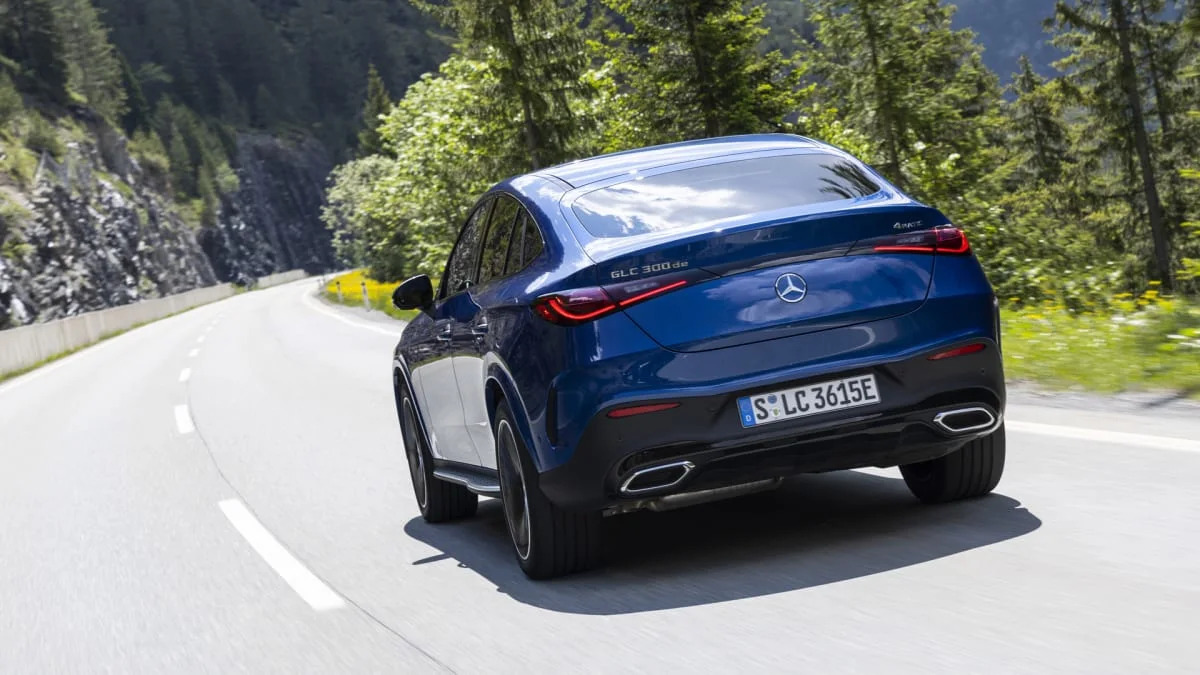
Mercedes-Benz GLC 300 SUV Luggage Test: How much fits in the cargo area?
Take a deep dive into the GLC 300's cargo area, and see how it compares to both its predecessor and other luxury compact SUVs.

2023 Mercedes-Benz GLC 300 First Drive Review
Our first opportunity behind the wheel of the current-generation GLC, with more in-depth information on what changed for 2023.
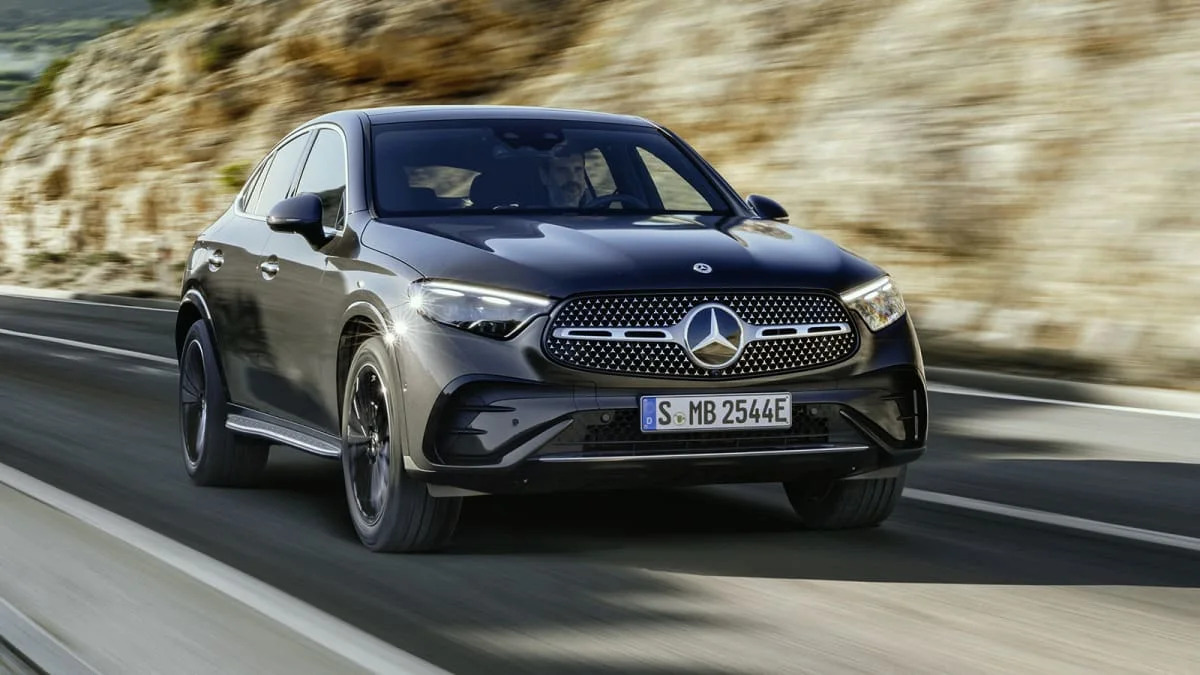
What is the 2024 Mercedes GLC price?
Pricing for the AMG models was not available at the time of this writing, but pricing for the GLC 300 SUV starts at $48,600, including the $1,150 destination charge. Opting for the all-wheel-drive GLC 300 4Matic SUV raises the starting point to $50,600, while the 4Matic-only GLC 300 Coupe starts at $58,150.
While “Coupe” versions of SUVs typically carry a price premium, the GLC’s hefty upcharge also includes an AMG design package that raises the price higher. Speaking of packages, the GLC offers its fair share of them along with three “trim” levels (Premium, Exclusive and Pinnacle) that bundle equipment and design elements together, but there’s also an abundance of stand-alone items that allows for customizability. You don’t have to spend $5,000 on some massive luxury package, for example, if all you want is ventilated seats.
What are the GLC safety ratings and driver assistance features?
The GLC-Class comes with some useful safety features as standard. Most notably, it comes with automatic emergency braking, blind-spot warning, automatic headlights with high-beam assist and driver attention monitoring. That’s all typical safety and driver assistance equipment for the car industry, but the optional Driver Assistance package goes much further. It adds lane-keeping assist, adaptive cruise control with stop-and-go capability and lane-centering steering assist (it can also automatically adjust itself based on changing speed limits), steering intervention added to the blind-spot-warning system, evasive steering assist and several pre-collision mitigation functions dubbed Pre-Safe. Adaptive cruise control without lane-centering is also available separate, as are rear side airbags.
The Insurance Institute for Highway Safety named the 2024 GLC SUV a Top Safety Pick+ for its best-possible crash test scores, plus sufficiently high scores for its headlights and frontal crash prevention system (the Driver Assistance package upgrades get a higher score than the standard systems).
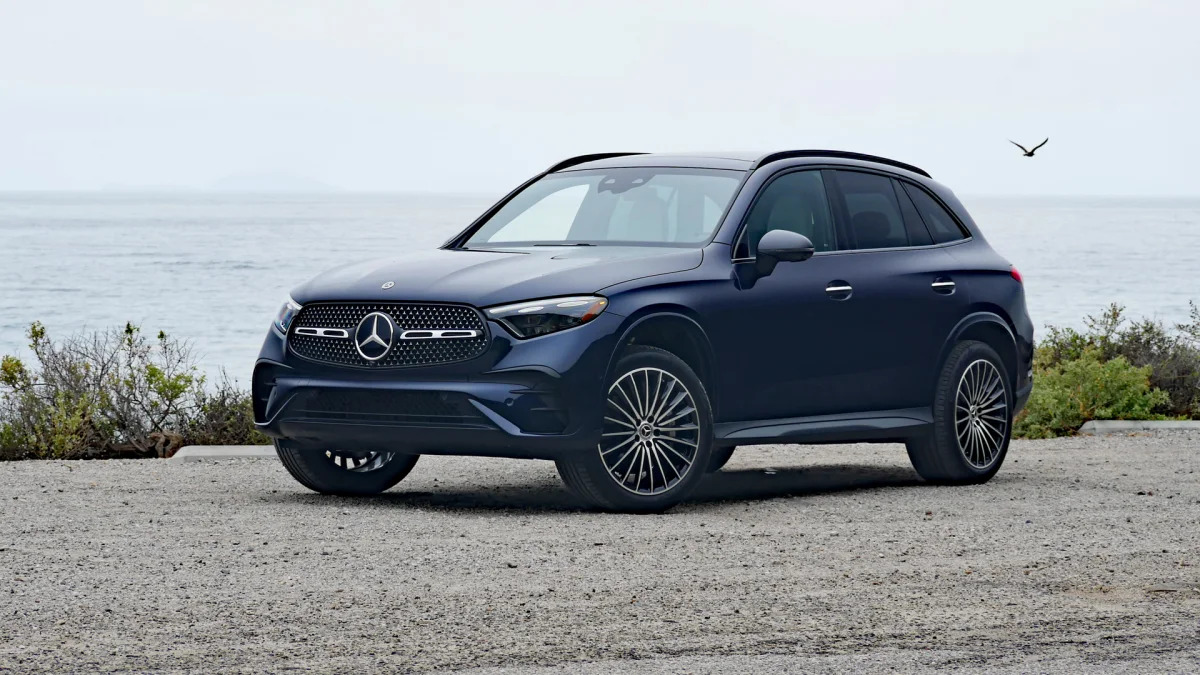















































































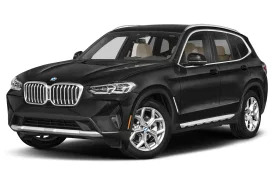

Sign in to post
Please sign in to leave a comment.
Continue